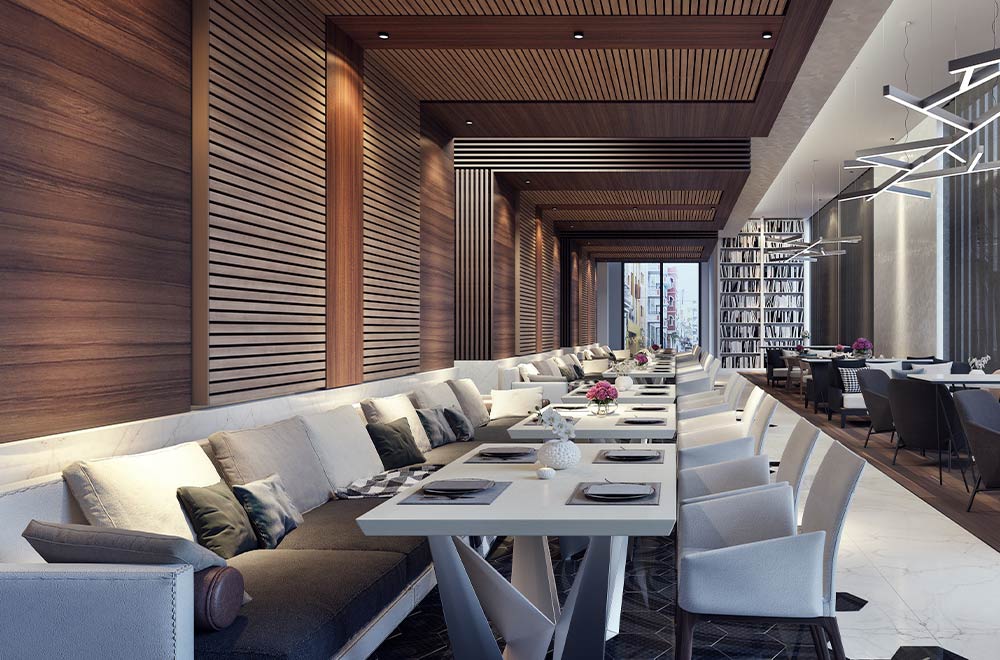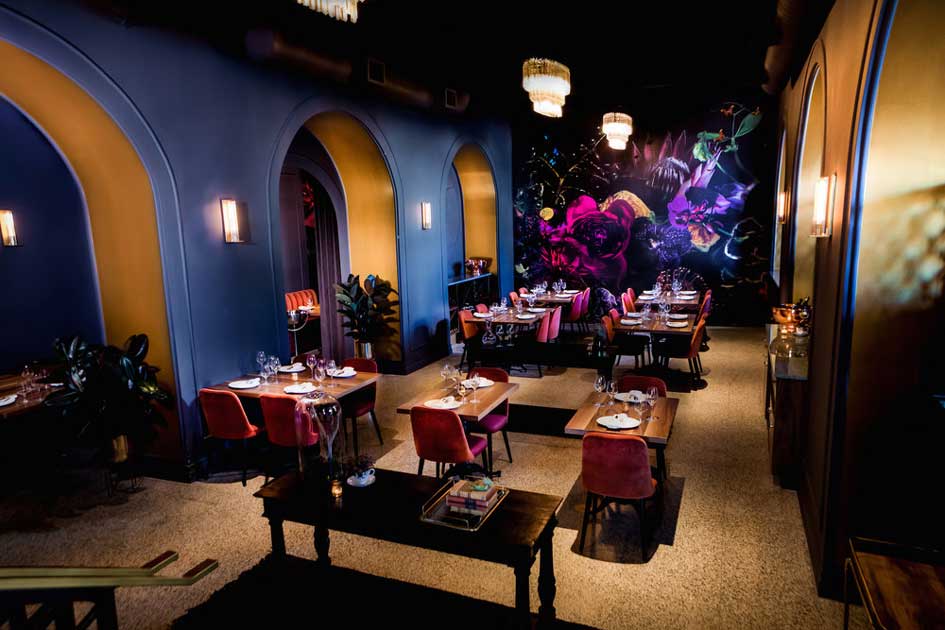Savor Genuine Asian Cuisine With a Pan-Asian Spin for a Culinary Experience
Getting started on a culinary trip through authentic Asian cuisine, enhanced with a Pan-Asian spin, provides a special possibility to discover the rich tapestry of flavors that define the area's varied cooking practices. This experience invites you to enjoy the beautiful balance of preferences-- wonderful, salty, spicy, and sour-- integrated by fragrant herbs and spices. Picture the innovative combination of Thai curry and ramen or the unexpected delight of sushi burritos. As you ponder these attracting meals, think about the social narratives and historical impacts that shape them, each bite offering a story waiting to be uncovered.

Discovering Pan-Asian Flavors
In the realm of international gastronomy, Pan-Asian food attracts attention for its impressive variety and the harmonious interaction of tastes from different Asian cultures. This cooking strategy commemorates the abundant traditions and special components found across the continent, creating a tapestry of tastes that is both gratifying and appealing. Key to Pan-Asian cuisine is its capability to balance different tastes-- sweet, salty, spicy, and sour-- while highlighting the freshness and top quality of each ingredient.
From the umami-rich soy sauce of Japan to the intense chili peppers of Thailand, Pan-Asian food provides an extensive combination of flavors. These aspects are commonly integrated in inventive methods, improving dishes with layers of intricacy. For circumstances, using great smelling herbs such as lemongrass and cilantro, usual in Vietnamese and Thai food, includes a rejuvenating illumination to dishes, while the consolidation of coconut milk delivers a luscious, rich appearance.
The emphasis on fresh fruit and vegetables and fragrant seasonings guarantees that each meal is not only a feast for the taste but also for the detects. Pan-Asian food welcomes diners to start a cooking trip, checking out the huge and varied landscapes of Oriental gastronomy with every bite.
Fusion Dishes to Try
While Pan-Asian cuisine is celebrated for its traditional flavors, the modern cooking landscape is increasingly embracing combination dishes that blend these classic elements with influences from other regions. This cutting-edge technique not just honors the abundant heritage of Asian cookeries however additionally presents unique preference experiences that appeal to modern tastes.
An archetype of such a fusion dish is the Korean-Mexican taco, where seasoned bulgogi beef is wrapped in a warm tortilla, covered with kimchi and a zesty gochujang-infused salsa. This mix weds the strong, full-flavored flavors of Korea with the dynamic, fresh elements of Mexican cuisine. In a similar way, sushi burritos have obtained popularity, joining together the fragile artistry of Japanese sushi with the hearty, hand-held convenience of a burrito, frequently including combination active ingredients like tempura shrimp and avocado with a drizzle of wasabi mayo.
One more significant recipe is Thai curry ramen, which instills the creamy, aromatic spices of Thai curry right into the comforting broth of conventional Japanese ramen, producing an unified mix that entices the senses. These combination meals extend beyond simple uniqueness; they stand for a culinary dialogue between cultures, urging exploration and technology worldwide of Pan-Asian food.
Important Active Ingredients and Flavors
To absolutely appreciate Pan-Asian cuisine, one need to recognize the necessary ingredients and seasonings that create its structure. This varied culinary style attracts from an abundant tapestry of Eastern customs, utilizing an unified blend of appearances and tastes. Secret components include soy sauce, fish sauce, and oyster sauce, which impart a tasty umami depth important to Oriental meals. Complementary to these are rice vinegar and mirin, providing a fragile acidity and sweetness.
Fragrant elements are crucial, with lemongrass, ginger, and garlic being ubiquitous throughout different Pan-Asian recipes. These ingredients offer an aromatic base that enhances the complexity of flavors. Spices such as celebrity anise, cardamom, and cinnamon introduce heat and personality, resembling influences from areas like China and India.

Cooking Methods and Tips
Understanding the art of Pan-Asian cuisine needs familiarity with its distinct food preparation techniques, each adding to the vibrant tapestry of tastes this cooking practice is commemorated for. Central to these techniques is the stir-fry, a quick cooking method that maintains the dietary integrity and brilliant shades of active ingredients. Utilizing a wok, the stir-fry method enables for also warm circulation, necessary for accomplishing the particular structure and taste see this website balance of Pan-Asian dishes.
One more essential method is steaming, particularly widespread in Chinese cuisine. This gentle technique preserves the natural flavors and nutrients of ingredients, making it ideal for fish and shellfish and vegetables. Dumplings, a cherished staple, typically take advantage of steaming, leading to soft, delicious textures.
Cooking, also important, gives smoky midsts to recipes such as Oriental bulgogi or Japanese yakitori (asian fusion restaurant). This method typically includes marinading active ingredients, enabling tastes to penetrate deeply before cooking over an open fire or warmer
Lastly, grasping the art of stabilizing flavors-- wonderful, sour, salted, bitter, and umami-- is site web essential. Appropriately layering these elements can raise a recipe from ordinary to phenomenal, using a complex and pleasing cooking experience that embodies the essence of Pan-Asian cuisine.
Dining Experiences Worldwide
Throughout the world, Pan-Asian cuisine supplies an unparalleled eating experience, celebrated for its rich tapestry of flavors and vivid discussions. This cooking sensation has transcended social limits, catching the hearts and tastes of food enthusiasts worldwide. In worldwide cities like New York, London, and Sydney, Pan-Asian restaurants offer as fusions where cooking practices from Thailand, Japan, China, and past converge, supplying restaurants with an eclectic mix of meals that highlight the region's variety.
The global charm of Pan-Asian food exists in its capability to use both credibility and technology. Cooks masterfully wed conventional components such as lemongrass, soy sauce, and miso with contemporary methods, leading to recipes that are both refreshingly brand-new and familiar. This combination permits restaurants to embark on a cooking trip that values heritage while embracing modernity.
Moreover, eating experiences are raised with attentively made settings that reflect the values of Pan-Asian appearances. From minimalist Japanese-inspired insides to dynamic Thai-themed rooms, each dining establishment uses an unique atmosphere that enhances the cooking offerings. Therefore, patrons are not merely taking in a dish however partaking in a cultural experience, making Pan-Asian eating a genuinely worldwide phenomenon.
Conclusion
The exploration of Pan-Asian food offers a profound understanding of the elaborate interplay of tastes and cooking traditions throughout Asia. By embracing combination dishes such as Thai curry ramen and sushi burritos, the cooking trip not just highlights the flexibility of conventional active ingredients however also showcases ingenious modern techniques. This gastronomic experience, improved by cooking techniques and necessary seasonings, gives an unique chance to appreciate the multiculturalism and culinary virtuosity that define Pan-Asian food on a worldwide range.
Beginning on a cooking journey through genuine Eastern cuisine, improved with a Pan-Asian spin, uses a distinct possibility to discover the abundant tapestry of tastes that define the area's diverse cooking traditions.In the realm of global gastronomy, Pan-Asian food stands out for its impressive diversity and the unified interaction of flavors from Discover More various Oriental cultures. Secret to Pan-Asian cuisine is its capability to balance contrasting flavors-- wonderful, salted, spicy, and sour-- while highlighting the quality and quality of each ingredient.
